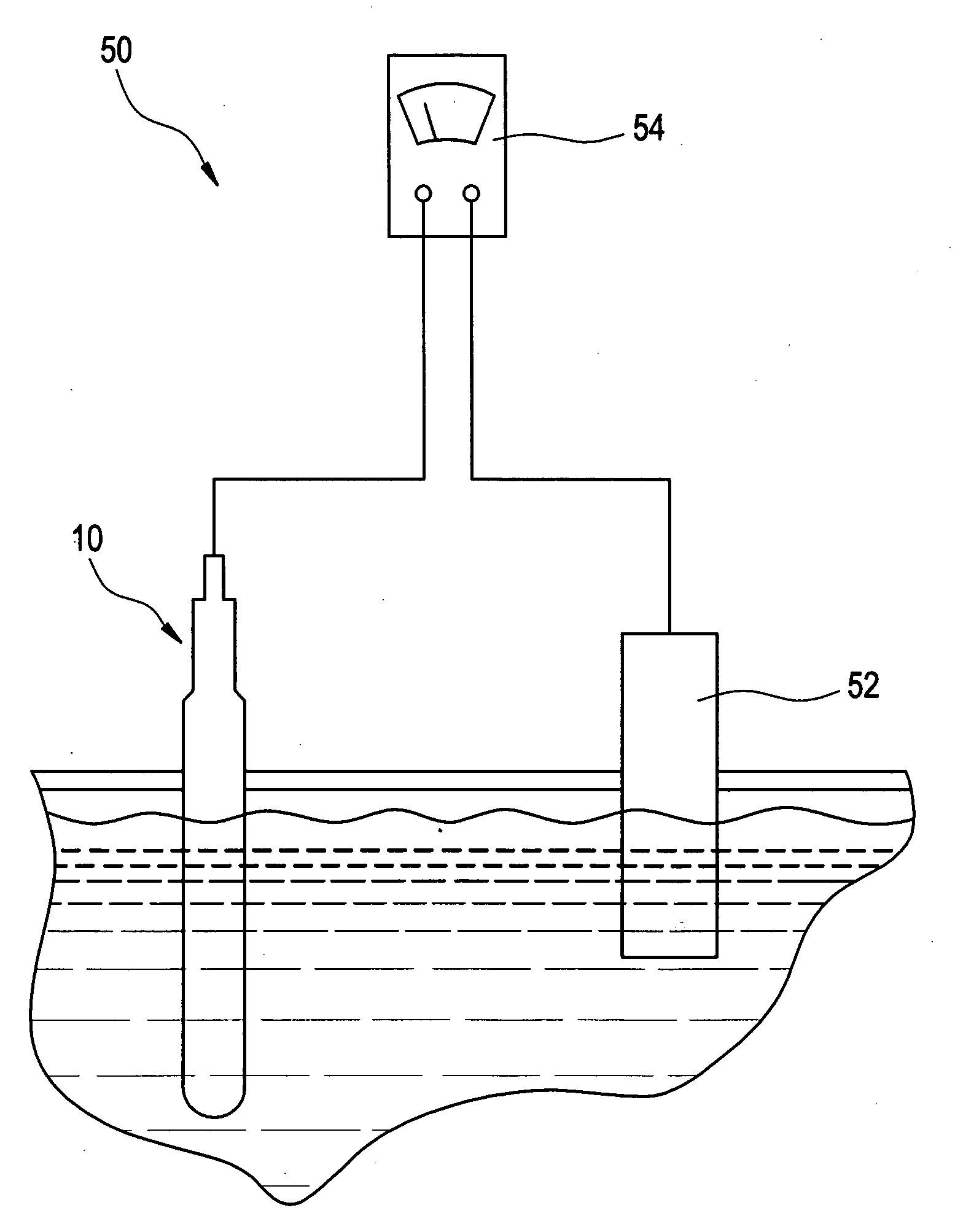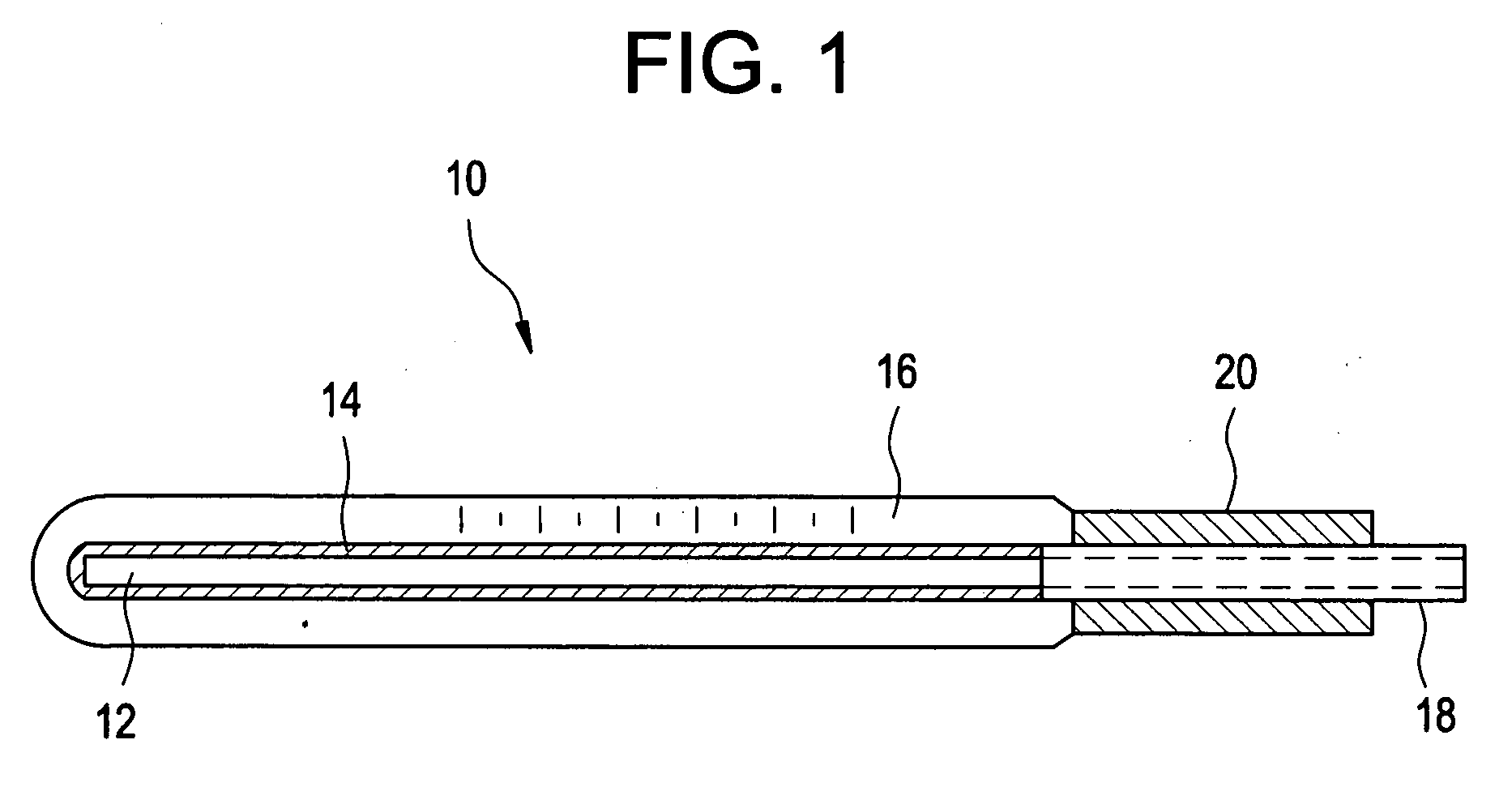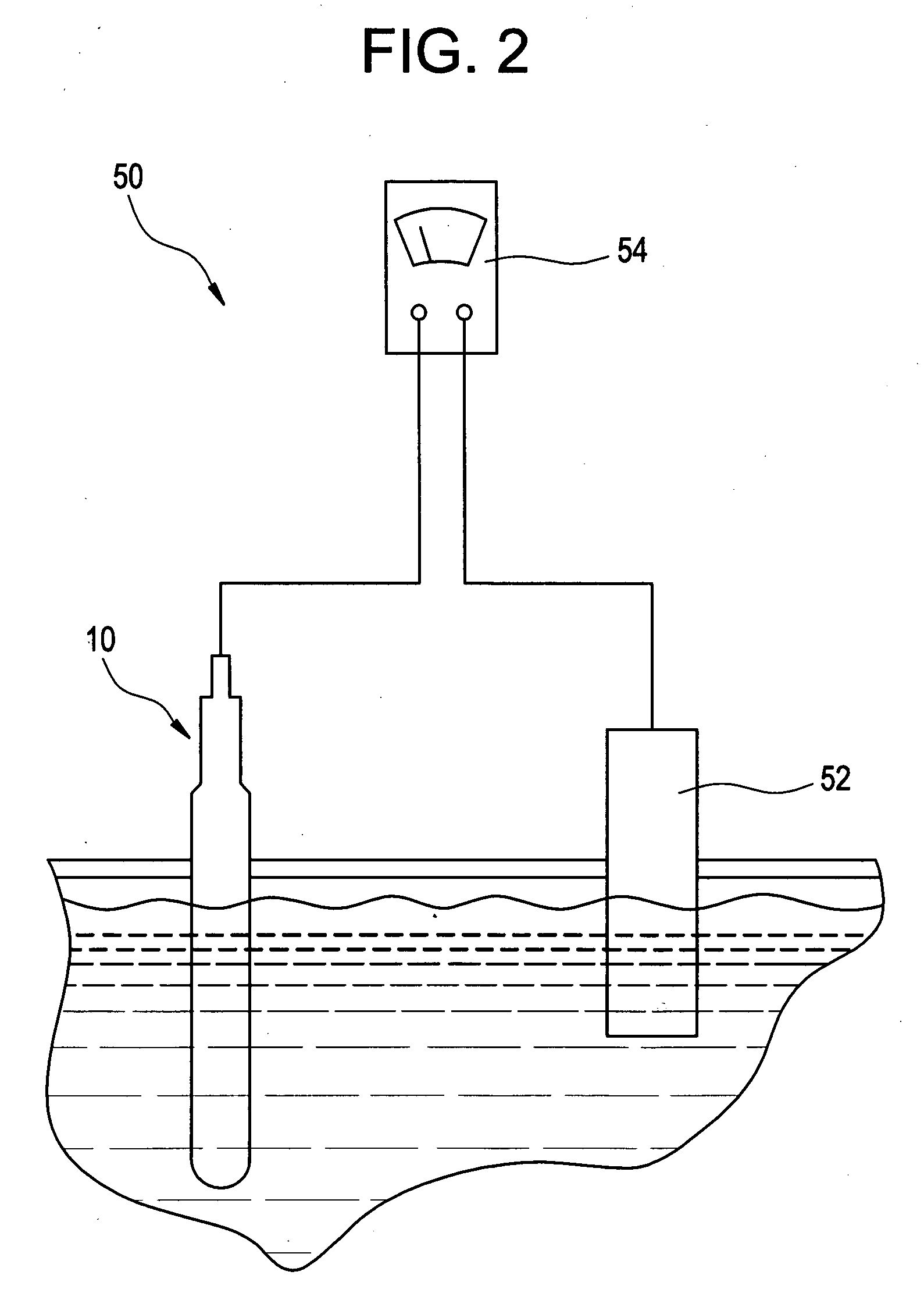Electrochemical corrosion potential sensor and method of making
a technology of electrochemical corrosion potential and sensor, which is applied in the field of electrochemical sensors, can solve the problems of high electrochemical corrosion potential (ecp), low ecps, and intergranular stress corrosion cracking of stainless steel
- Summary
- Abstract
- Description
- Claims
- Application Information
AI Technical Summary
Problems solved by technology
Method used
Image
Examples
Embodiment Construction
[0015]Disclosed herein is an electrochemical corrosion potential (ECP) sensor and a method of using the sensor to measure the electrochemical corrosion potential of surfaces exposed to water at temperatures of 200 degrees Celsius (° C.) or higher, such as in fossil fuel, geothermal, and nuclear power plants. In one example, the disclosed ECP sensor may be designed for use in nuclear reactors. In contrast to the prior art, the ECP sensor disclosed herein employs a metal oxide coating disposed directly on an electrical conductor. By coating the metal oxide layer and a zirconia-containing layer directly to the electrical conductor, the need for a ceramic tube and a ceramic-to-metal braze for fixing the ceramic tube to the metal alloy tube is eliminated. Two of the most common modes of failure in currently existing ECP sensors are consequently removed. As such, the disclosed ECP sensor has a longer operating lifetime of at least about one fuel cycle, which is expected to be about 18 mon...
PUM
| Property | Measurement | Unit |
|---|---|---|
| thickness | aaaaa | aaaaa |
| electrochemical corrosion potential | aaaaa | aaaaa |
| temperature | aaaaa | aaaaa |
Abstract
Description
Claims
Application Information
 Login to View More
Login to View More - R&D
- Intellectual Property
- Life Sciences
- Materials
- Tech Scout
- Unparalleled Data Quality
- Higher Quality Content
- 60% Fewer Hallucinations
Browse by: Latest US Patents, China's latest patents, Technical Efficacy Thesaurus, Application Domain, Technology Topic, Popular Technical Reports.
© 2025 PatSnap. All rights reserved.Legal|Privacy policy|Modern Slavery Act Transparency Statement|Sitemap|About US| Contact US: help@patsnap.com



